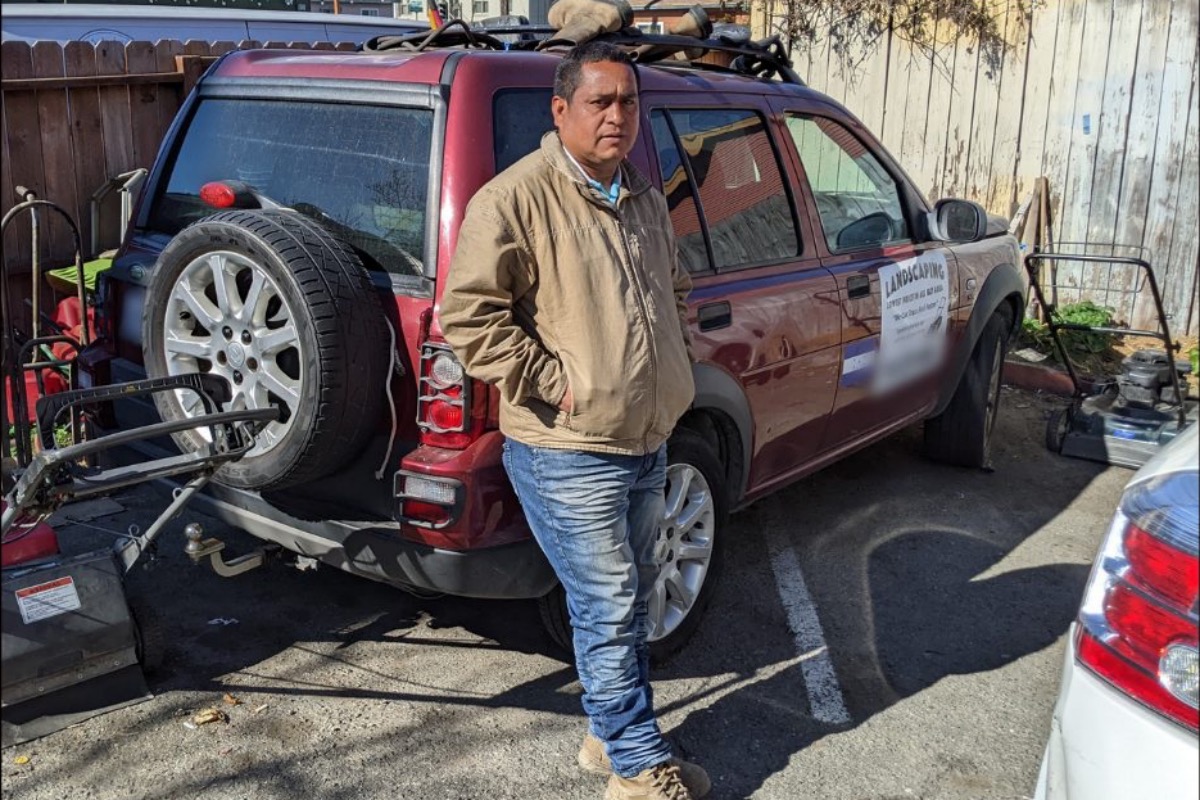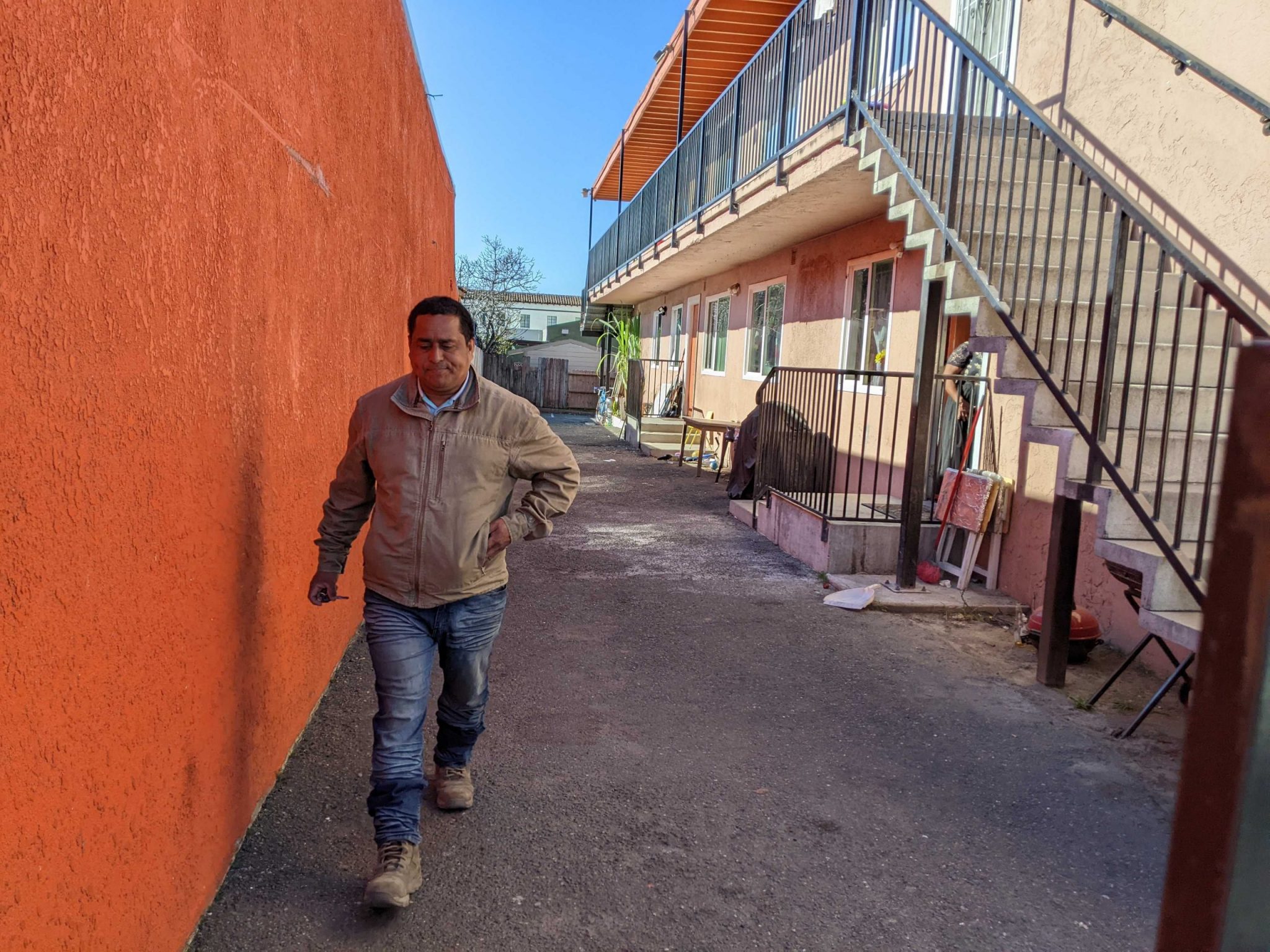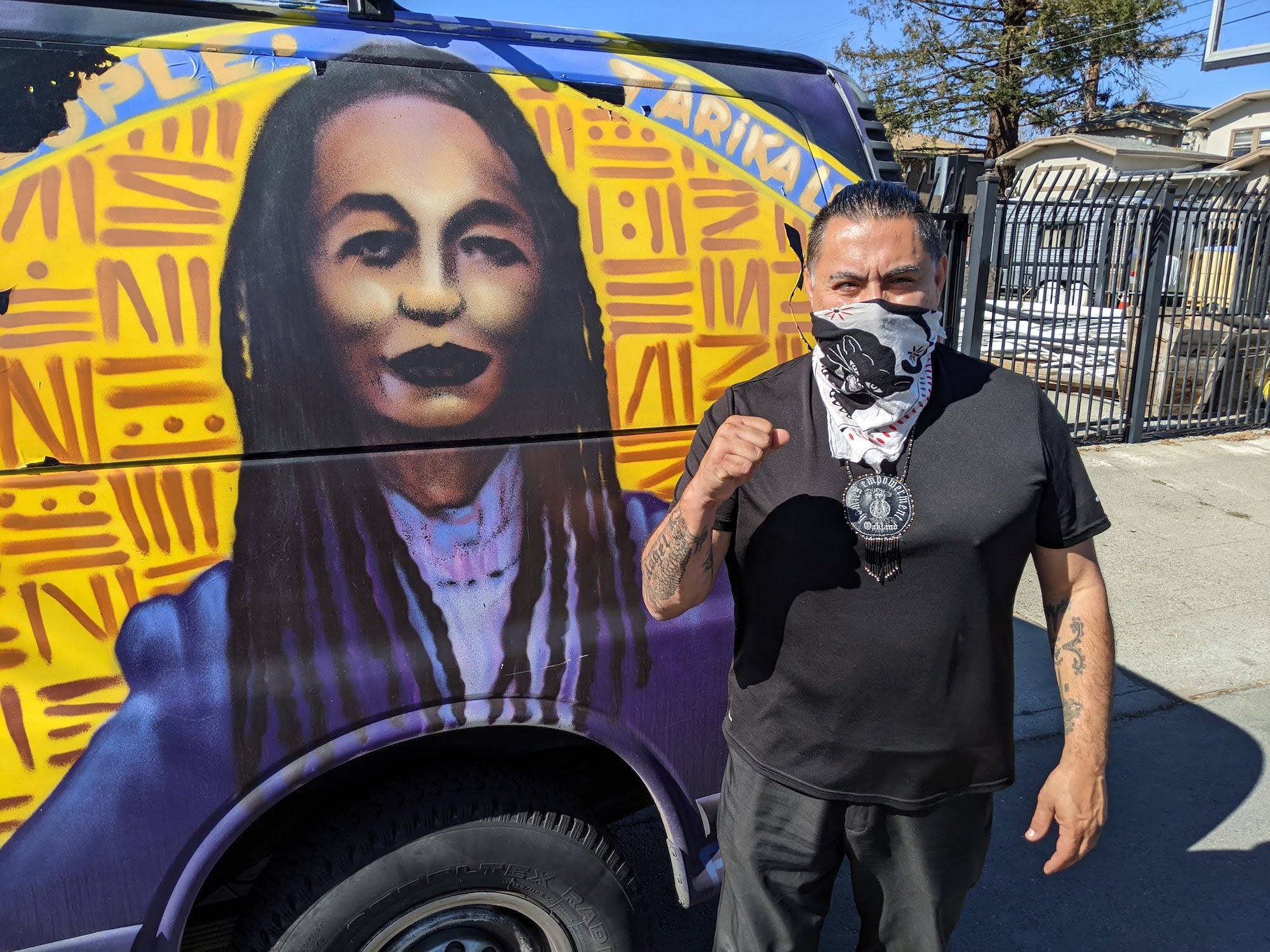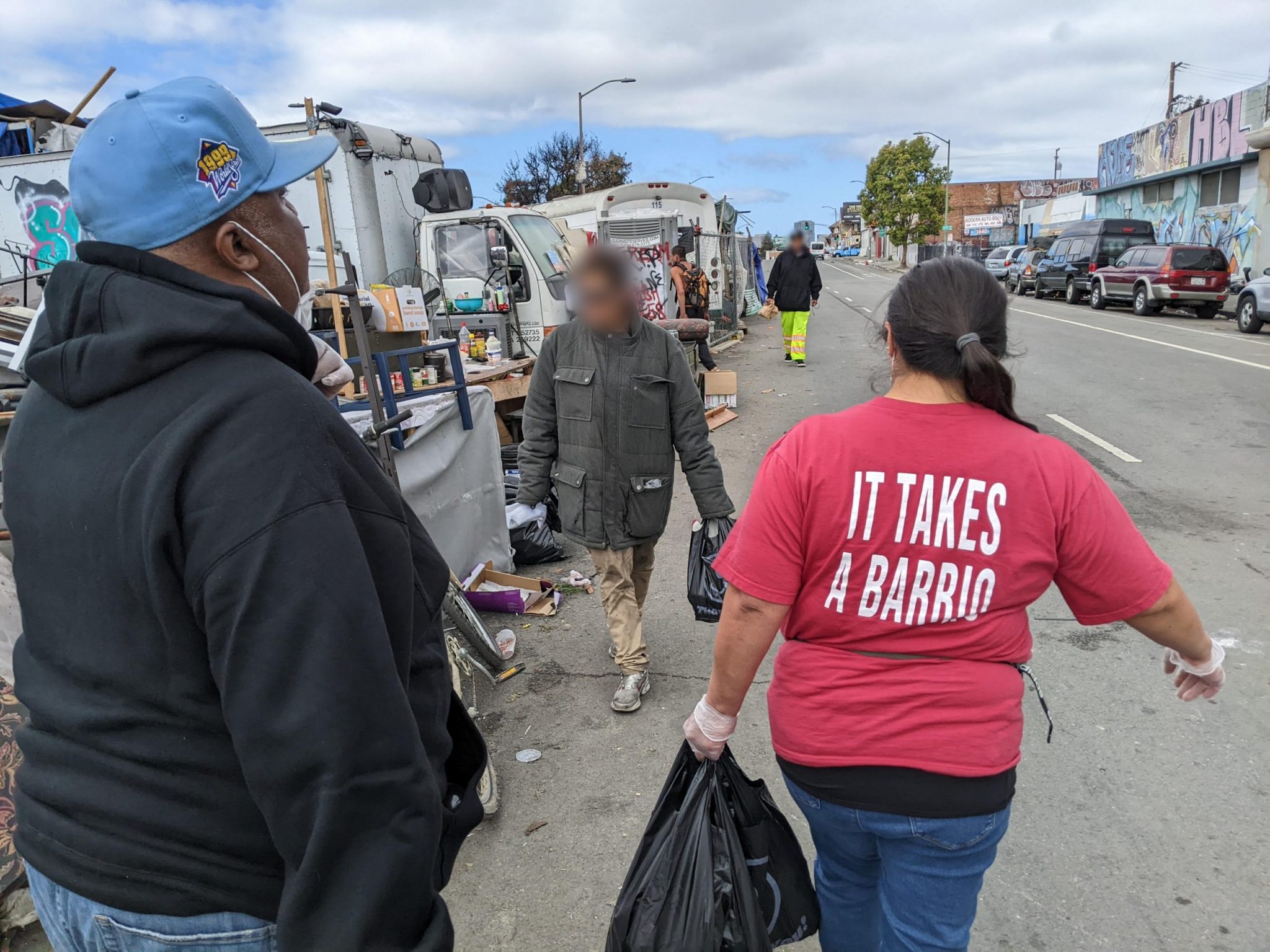

Manuel Avilez, a 39-year-old undocumented immigrant from Honduras, now lives in a car with his 19-year-old son. (Photo by Marta Martinez)
Living in the Bay Area has become a luxury that many can no longer afford. It’s home to the biggest —and richest— tech companies in the world. In San Francisco, a one-bedroom apartment costs more than $3,500 a month on average, and the city holds the highest concentration of billionaires on the entire planet.
Yet, at the same time, homeless encampments grow under the freeways, on empty lots, and in parks. California has the highest homelessness rate in the country, and half of Latino families —over 1.7 million— don’t earn enough to get by.
Data shows that evictions went down in California during the pandemic, thanks to an eviction moratorium that protected tenants. But the housing struggles of undocumented communities aren’t being captured by authorities or mainstream media.
In collaboration with the local media outlet El Tímpano, we bring you the stories of undocumented Latinos and Latinas who had to leave their homes during the pandemic, and how COVID-19 has made the community more vulnerable to ending up on the streets.
More than 2,100 people subscribe to El Tímpano’s text messaging service to receive news in Spanish and share their questions and stories. In turn, El Tímpano investigates their concerns and connects them with local resources. From their messages, it’s clear that housing is their biggest worry right now.
Manuel Avilez is 39 years old, from Honduras, and has been living in Oakland for more than seven years. He has a square face and his small eyes hide under prominent, straight eyebrows.
He’s standing next to a cream-colored car parked in a corner lot next to three others in East Oakland. Here’s where he and his 19-year-old son sleep every night. The car has three rows of seats. At night, they recline them. Manuel sleeps in the very back, while his son takes the middle seats and rests on an inflatable mattress.
Manuel said they feel safe, they’ve gotten used to it, but there are no fences, no protection from the street. Sleeping in the car was supposed to be temporary, just until he could get back on his feet after losing his job, but it’s been almost a year already.
He used to rent a room in the peach apartment building right across the street, but then he got COVID-19, lost his job, and couldn’t make rent anymore. “After having had my room where I could go in and rest, it’s very sad now to come and park the car, and instead of going into my room, having to do it in my car,” Manuel said.


Manuel Avilez, 39, from Honduras, in the backyard of the apartment building where he used to rent a room in East Oakland. (Photo by Marta Martinez)
Inés is an Afro-Latina single mother from Guerrero, Mexico. She wears bright sunflower earrings made of beads, and they match the sunflowers embroidered on her blue shirt. She’s 34 years old and came to the United States in 2017, hoping to secure a better future for her teenage daughter Diani and her son Dilan, who has an intellectual and speech disability.
When the pandemic started, Inés was living with her sister’s family in a three-bedroom apartment in the Mission District of San Francisco. The apartment was crowded: Inés said there were more than 18 people. And it isn’t just them, Inés said: that’s how many people live in the Bay Area—especially Latino families.
They got a letter from their landlord, in English, saying there were too many people living in the apartment. It wasn’t an official eviction notice, but they got scared. Even though Inés works doing community outreach on housing issues, her fear trumped her knowledge of her rights and, in June 2020, she left the apartment with her two children.


Dr. Cesar Cruz, founder of the grassroots organization Homies Empowerment, in front of the van they use to distribute free food in homeless encampments in Oakland every week. (Photo by Marta Martinez)
Homelessness can be difficult to track or gather data on, but everyone we talked to in the Bay Area said that, since the pandemic, there are more people on the streets struggling to cover their most basic needs. They see it with their own eyes, every day. In California, before the pandemic, one in three undocumented immigrants lived in poverty.
One of the places where these increasing needs are quite visible is at the community-based organization Homies Empowerment, or Homies for short, in East Oakland. Every Tuesday, they set up what they call the “Freedom Store,” and even though products are set up as if in a supermarket, they’re all free for people in need.
According to Homies, 80 percent of the people they serve are Latino and Maya Mam immigrants, and 11 percent are African American.


Homies Empowerment staff, Reverend Harry Williams and Yolanda Castillo, distributing food at a homeless encampment in East Oakland. (Photo by Marta Martinez)
Homies founder Dr. Cesar Cruz holds a doctorate in educational leadership from Harvard University. For most of his life, he was undocumented. Through the organization’s work, Cesar has witnessed first-hand how the pandemic has particularly affected the Latino community when it comes to housing.
“We went from an apartment to a car to evicted to under a bridge to being invisible. And there’s such a shame of living under a bridge that we began to disappear. And it was hard to count us and it’s hard to count us,” Cesar said.
***
Latino USA with Maria Hinojosa, produced by Futuro Media, is the longest-running Latino-focused program on U.S. public media.


